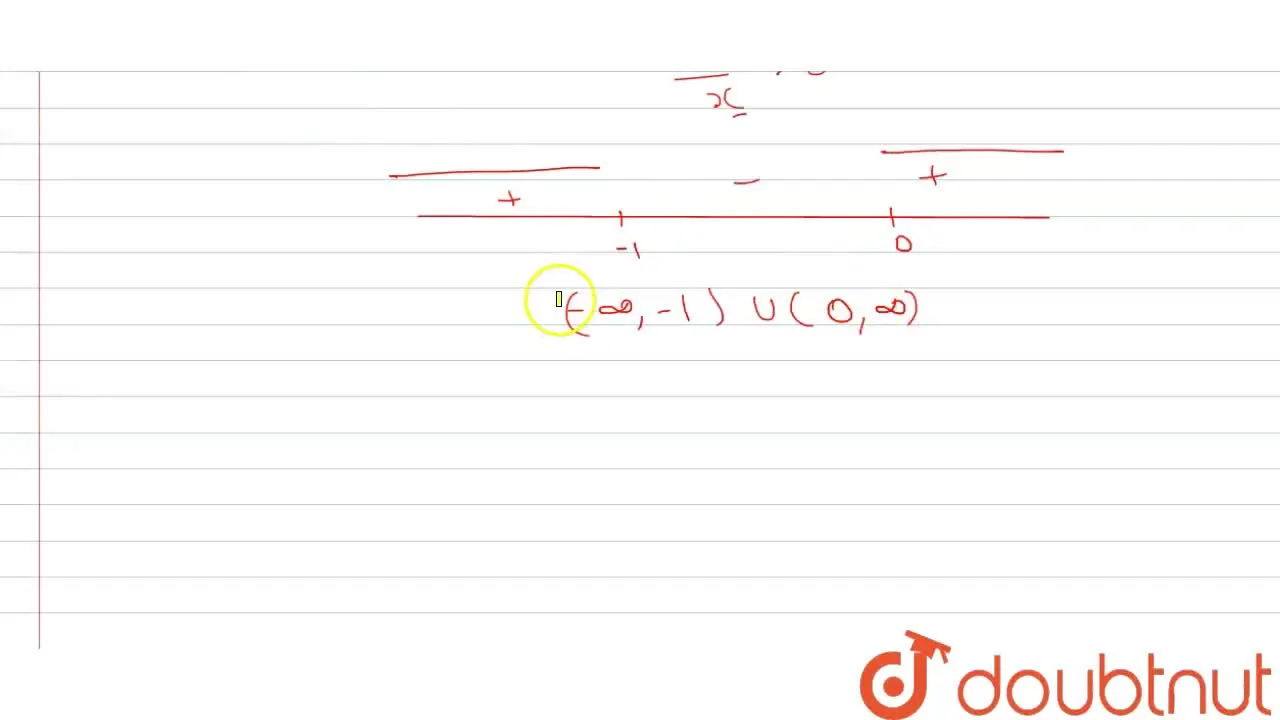consider the function f(x) =
The domain of f(x) is
R-{0}
(0,oo)
The correct Answer is:3
f(x) is defined if
or
Now f(X)=
Now is always positive Hence the sign of f(X)
Depends on the sign of ln
Let g(x)=
(i) for
Thus g(X) is monotonically decreasing for x in
or
or
(ii) for
Thus g(X) is monotonically increasing for
or
Hence from (i) nd (ii) we get
Thus f(x) is montonically increasing in its domain Also
=e
The graph of f(X) is shown in figure

Range is
Related Playlists
- BOOK - CENGAGE ENGLISHCHAPTER - MONOTONICITY AND MAXIMA MINIMA OF FUNCTIONSEXERCISE - Matrix Match Type14videos
MONOTONICITY AND MAXIMA MINIMA OF FUNCTIONS
- BOOK - CENGAGE ENGLISHCHAPTER - MONOTONICITY AND MAXIMA MINIMA OF FUNCTIONSEXERCISE - Linked comprehension Type2videos
MONOTONICITY AND MAXIMA MINIMA OF FUNCTIONS
- BOOK - CENGAGE ENGLISHCHAPTER - METHODS OF DIFFERENTIATIONEXERCISE - Single Correct Answer Type46videos
METHODS OF DIFFERENTIATION
- BOOK - CENGAGE ENGLISHCHAPTER - MONOTONOCITY AND NAXINA-MINIMA OF FUNCTIONSEXERCISE - Comprehension Type6videos
MONOTONOCITY AND NAXINA-MINIMA OF FUNCTIONS
Similar Questions
Consider the function f(x)=∣∣x3+1∣∣. Then,
View SolutionIf a function satisfies the condition f(x+1x)=x2+1x2,x≠0, then domain of f(x) is
View SolutionIf f(x)=a−xa+x, the domain of f−1(x) contains
View Solutionconsider the function f(x)=x2x2−1
If f is defined from R−(−1,1)→R then f isView SolutionIf f(x)=√x−1x, what is the domain of f(x) ?
View SolutionIf f(x)=1√x, what is the domain of f(x)?
View SolutionDomain of the function f(x)=1log(2−x) is
View SolutionThe domain of the function f(x)=1√4+3sinx is :
View SolutionConsider the function f(x)=(.x+1C2x−8)(.2x−8Cx+1) Statement-1: Domain of f(x) is singleton. Statement 2: Range of f(x) is singleton.
View SolutionConsider the function f:R−{1} given by f(x)=2xx−1 Then f−1(x)=
View Solution


